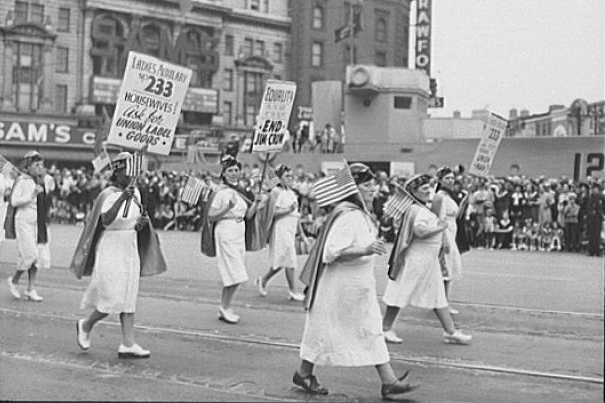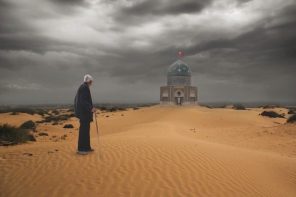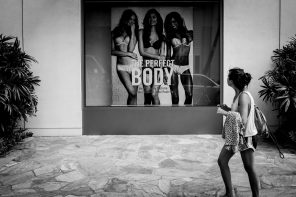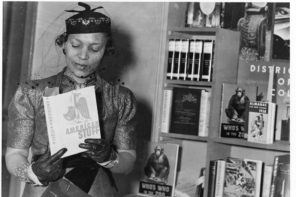What inspired you to write The Making of Working-Class Religion?
The longer you live with a project, the more tangled and mythological its origins become in your memory. But here is the story I tell about it. In my teens and 20s, like most people, I worked a series of jobs with low pay, little autonomy, and uncertain futures. These experiences led me to become obsessed with questions of meaning and morality in relation to labor. In particular, I wanted to know how other people who spent most of their waking hours in less-than-satisfying jobs attributed significance to their work. I also thought about the moral and ethical implications of our current economic institutions, and how they might meet the human need for purposeful work.
It seemed to me that religion must have been involved in these questions. I did not (and do not) have any particular theological perspective—indeed, I am personally irreligious—but felt that religion had a role in working peoples’ lives that most histories had not represented. In graduate school, I started digging around for promising sources, and I discovered a footnote in an article that referred to “surveys” taken by workers who had studied at a Catholic “labor school” in Detroit in the early 1940s. Wait a minute, I thought: there are first-hand responses written by ordinary, lay Catholics in their own words? This was my “eureka” moment. And, sure enough, it turned out that there were a lot of potential sources. From that point on, I was invested in the story of Detroiters and how religion played out in their neighborhoods, workplaces, and unions.
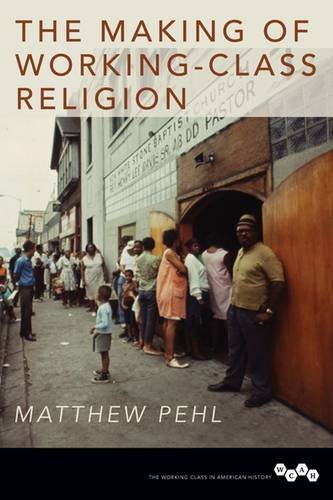
The Making of Working-Class Religion
Matthew Pehl
University of Illinois Press
September 1, 2016
What’s the most important take-home message for readers?
I’m afraid I have to evoke that stereotypical historian’s equivocation: “It’s complicated.” But the message can be boiled down to a “meta-point” and a “particular point.”
First, the meta-point is that religion is a key element in understanding how class functions in the United States. In a society without an established aristocracy or landed titles but with generous access to the ballot, a democratized consumer marketplace, and an insistence (at least rhetorically) on equality, how are social ranks demonstrated? Race, of course, is primary. But religion—by which I mean both the public performance of rituals and the private structure of thoughts and beliefs—became a major marker of class in the 20th century. Workers often saw their religion as evidence of middle-class aspirational respectability; however, those who shouted at church, prayed to patron saints for miracles, liked certain religious music, or seemed overly dependent on priests and pastors were understood to be “working class.” I have little doubt that people who lived in working-class Catholic parishes or attended evangelical storefront churches did, in fact, realize that their religious identity was inextricably tied to a class identity in the eyes of the larger community.
The vast majority of writing on religion has focused either on denominational (Catholic, Jewish, Mormon, etc.) or ethnic/racial categories (the “black church,” “Latino/a religion,” etc.). In this book, I make a case that class is equally important. Accepting this claim would mean thinking more deeply about across denominational lines.
Second, the particular point is that the rise and fall of Congress-of-Industrial-Organizations-style unionism (in Detroit, at least) had a cultural analog in the rise and fall of specific expressions of working-class religion. Among the largest working-class religious communities in Detroit—Catholics, African-American Protestants, and white evangelicals from the South—a set of new, more “worker-centric” idioms began developing in the 1930s, linking religious and class identity in defense of the CIO and the general thrust of the New Deal. This “proletarianization” of religion produced a conservative counter-narrative. Lacking containment within any single ideological bottle, the “worker religion” was leaking all over the table by the mid-1950s. By the 1960s, race had almost entirely supplanted class as the key moral issue. I would argue that this remains our primary cultural framing.
Is there anything you had to leave out?
I trimmed the original manuscript, which ultimately led to greater clarity. I don’t miss very much of the material that I cut. However, I think I could have written a whole book just focusing on religion in the 1960s, which was such a rich and compelling period in Detroit’s history. That would have been a very different book, though. I hope readers will at least get a taste for the period from the book as is.
What are some of the biggest misconceptions about your topic?
The fundamental misconception most people make is that religion must be either “good” or “bad” for working people. The account of “good” religion holds that faith was a kind of progressive social and cultural capital, encouraging workers to struggle against injustices, form unions, and so on. “Bad” religion, in contrast, is often described as over-emotional, anti-intellectual, obscurantist, and magical, creating a hegemonic barrier to workers’ recognition of their “real” interests.
Such “good/bad” framing, I’m afraid, tells us more about the thinking of the historian than his/her subjects. The people I studied could simultaneously believe in miracles, pray for faith healing, and collect sacred (“magical”) objects, while also joining their union, voting in elections, and building communities. Religiously affiliated workers ranged from highly activist to totally uninvolved in social movements; radically leftist to radically rightist; and racially tolerant to implacably tribal. What they had in common was that their working-class religion was perceived as “good” or “bad” in a way middle- and upper-class religion was not; further, religion provided a personal sense of purpose and connectedness for working people that could otherwise have been lacking in their lives.
Did you have a specific audience in mind when writing?
Terri Gross. Are you listening, Terri? Also, anyone who reads Religion Dispatches.
Are you hoping to just inform readers? Entertain them? Piss them off?
I am most invigorated by books that challenge or change the way I think by giving me a new “lens” through which to view the world. I hope readers will have that experience with my book, especially regarding the way they think about what religion is and how it actually operates in people’s lives.
What alternative title would you give the book?
Originally, I was very attached to Power in the Blood. I liked this title because it evoked a Christian hymn that had been reworked by Joe Hill, an Industrial Workers of the World songwriter, into “There is Power in a Union.” I think this dual meaning nicely symbolized the blending between religion and labor, but ultimately, I wound up brazenly invoking E. P. Thompson’s legendary study, The Making of the English Working Class. I don’t claim to have replicated Thompson’s achievement, but do think religion was “made” among Detroit’s workers much as class was “made” among Thompson’s workers. I hope future scholars will explore these connections in greater depth.
How do you feel about the cover?
The cover is wonderful! There is a context to the image that the casual observer may not immediately grasp. The photo was taken during the midst of Detroit’s traumatic 1967 riot; it shows African Americans lining the streets, seeking emergency supplies from a storefront church. What this picture nicely captures is the way religion was woven into everyday working-class street life while also playing a part in “bigger” or more famous historical events, such as the riot.
Is there a book out there you wish you had written? Which one? Why?
Well, of course! I think some of the smartest and most insightful books about history have been written by novelists. Philip Roth’s The Plot Against America is one of the few books I have read many times; in our current political cycle, it has been constantly on my mind. Edward Jones’s The Known World is another novel that conveys the meaning of the past in a brilliant form. Among historical works, I really admire the argumentative force and interpretive clarity of Jon Butler’s Awash in a Sea of Faith, and much of my particular way of reading religion was influenced by Robert Orsi.
What’s your next book?
I have started studying the impact of feminism and the sexual revolution on women and their families in the Northern Plains after WWII. I am reasonably sure that both labor and religion will be once again figuring in interpreting this history.


